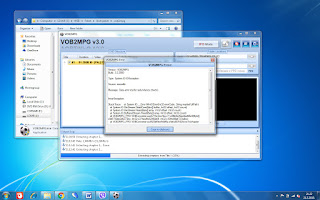DIY indoor free TV antenna
This morning I found out that a storm had disabled my outdoor TV antenna.
Since I do not have the time to climb on the roof and repair the damage to the antenna and replace the 20 m cable, I will have to take some other steps to ensure that I can watch the TV program in peace.
I decided to design a simple indoor antenna. I believe that it will be able to temporarily replace my outdoor antenna, because the repeater from which I receive most of the free TV programs is just over 10 km away from me.
The decision was made to design a simple ground plan antenna because I did not need any additional materials for it. I already have everything I need.

The antenna dimensions are selected for the frequency 626 MHz (UHF - 40 channel) on which the repeater broadcasts free programs in HD format (MUX M2 DVBT2).
First, we cut off 78 cm of cable (min) measured with the connector.
Then cut off some of the cable that we will later use to make the radial (58 cm). The other 20.3 cm long part is the antenna monopole and the connection cable with the connector.
Now we need to remove the insulation from the antenna body (11.1 cm long for 626 MHz).
I marked the 5 mm where we will only remove the insulation when we wind up the radials.
Let's form the radials. I removed the copper wire from the previously cut part of the cable.
We fold it in half.
Mark slightly more than 12.3 cm from the folded end. This is our winding tag.
Now we wrap one winding around the antenna body.
Remove those 5mm insulation and pull the radials to the insulation.
We extend them at a 90 degree angle.
We remove knitted armor and aluminum (if any) from the antenna and cut it 1 cm above the radial. We fold the rest of the shielding and wrap it over the radial.
You can solder the radials to the braided shielding or just wrap them. I attached them to the part of the coaxial cable connector.
Now shorten the radials to the correct length (12.3 cm in my case).
Radials should be bent at 45 degrees to reduce the antenna resistance to 50 ohms and match the input resistance of the receiver.
If the radial spacing is equal to their length then they are bent properly at an angle of 45 degrees.
And now let's try out our antenna.
Excellent, the reception is good for channels above as well as below the frequency for which the antenna was dimensioned.
Find the spot with the best reception and enjoy your free TV program.
I will experiment more with other models later.
Who knows, maybe I can even fix the problem without climbing the roof.
Since I do not have the time to climb on the roof and repair the damage to the antenna and replace the 20 m cable, I will have to take some other steps to ensure that I can watch the TV program in peace.
I decided to design a simple indoor antenna. I believe that it will be able to temporarily replace my outdoor antenna, because the repeater from which I receive most of the free TV programs is just over 10 km away from me.
The decision was made to design a simple ground plan antenna because I did not need any additional materials for it. I already have everything I need.

The antenna dimensions are selected for the frequency 626 MHz (UHF - 40 channel) on which the repeater broadcasts free programs in HD format (MUX M2 DVBT2).
First, we cut off 78 cm of cable (min) measured with the connector.
Then cut off some of the cable that we will later use to make the radial (58 cm). The other 20.3 cm long part is the antenna monopole and the connection cable with the connector.
Now we need to remove the insulation from the antenna body (11.1 cm long for 626 MHz).
I marked the 5 mm where we will only remove the insulation when we wind up the radials.
Let's form the radials. I removed the copper wire from the previously cut part of the cable.
We fold it in half.
Mark slightly more than 12.3 cm from the folded end. This is our winding tag.
Now we wrap one winding around the antenna body.
Remove those 5mm insulation and pull the radials to the insulation.
We extend them at a 90 degree angle.
We remove knitted armor and aluminum (if any) from the antenna and cut it 1 cm above the radial. We fold the rest of the shielding and wrap it over the radial.
You can solder the radials to the braided shielding or just wrap them. I attached them to the part of the coaxial cable connector.
Now shorten the radials to the correct length (12.3 cm in my case).
Radials should be bent at 45 degrees to reduce the antenna resistance to 50 ohms and match the input resistance of the receiver.
If the radial spacing is equal to their length then they are bent properly at an angle of 45 degrees.
And now let's try out our antenna.
Excellent, the reception is good for channels above as well as below the frequency for which the antenna was dimensioned.
Find the spot with the best reception and enjoy your free TV program.
I will experiment more with other models later.
Who knows, maybe I can even fix the problem without climbing the roof.




















Comments
Post a Comment